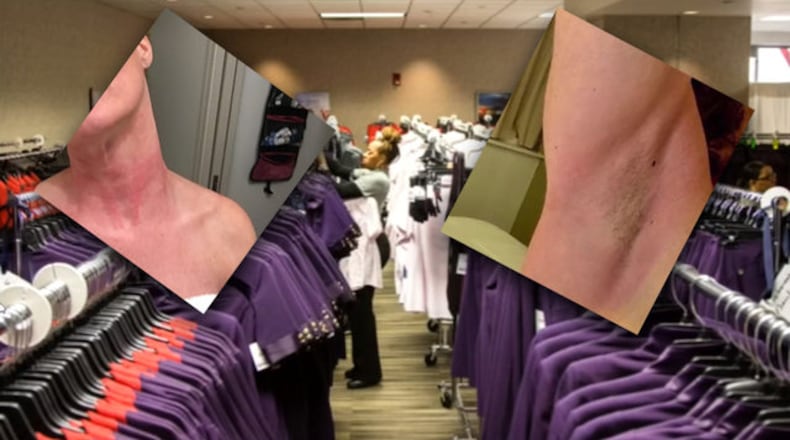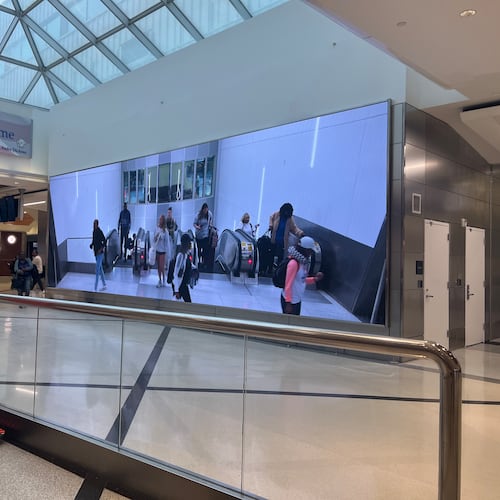The Association of Flight Attendants union said it will test Delta Air Lines flight attendant uniforms that some employees allege cause rashes and other reactions.
The Atlanta Journal-Constitution first reported issues with the new purple Delta uniforms, including skin sensitivity, shortly after the uniforms debuted last year.
Earlier this year, two Delta flight attendants filed a proposed class-action lawsuit alleging that wearing their uniforms causes skin rashes, headaches, fatigue and other issues. Another proposed class-action lawsuit against the uniform maker, Lands' End, was filed in October in Wisconsin.
Delta commissioned its own toxicology testing on the uniforms by toxicology company Intertox — which found that more than 940 Delta employees, including flight attendants and customer service agents, filed complaints alleging health effects such as skin irritation or allergies.
That amounts to 2.6 percent of employees in those classifications, though 87 percent of the complaints were from flight attendants. The report concluded that the firm’s analyses “have not linked the tested uniform garments to any attributable health risk.”
Last week, Delta’s senior vice president of in-flight service, Allison Ausband, sent a memo to flight attendants saying the toxicology report did not answer why some employees are experiencing a reaction.
Ausband also wrote in the memo that the airline would no longer require employees to go through a process of reporting an on-the-job injury with its claims administrator Sedgwick in order to wear alternative black-and-white uniforms. Some flight attendants had said they found the process too burdensome.
“The safety and well-being of our employees is Delta’s highest priority, which is why we sought the best toxicology testing available and continue to work to find solutions for each individual,” Delta said in a written statement.
The company also said it “would expect any other testing — if performed using professional, recognized standards in the toxicology field — to yield the same result.”
The Association of Flight Attendants, which seeks to unionize Delta flight attendants, said its industrial hygienist Judith Anderson has taken on the issue at other airlines.
The issue “affects different people in different ways and the reactions can vary in severity with symptoms such as rashes, headaches, hair loss and breathing problems when wearing the uniform,” according to the union. It added that some flight attendants affected by the issue “have lost pay and are experiencing mounting medical bills.”
In a letter to Delta flight attendants, the union asks that unworn garments be shipped in their original packaging to the union for the testing.
A government evaluation of the Delta uniforms by the National Institute for Occupational Safety and Health (NIOSH) was completed earlier this year in response to an employee request. NIOSH is part of the Centers for Disease Control and Prevention.
NIOSH conducted a health hazard evaluation of symptoms among Delta employees allegedly related to the uniforms, and concluded that textile chemicals in the uniforms or irritation from fabric may have caused the skin symptoms.
The June 2019 NIOSH letter on the health hazard evaluation said Delta had taken several actions to address employees’ symptoms and health concerns and made some recommendations, including that Delta continue to offer alternatives and consider laboratory testing when preparing new uniform pieces in the future.
Ausband acknowledged that some of the uniforms in the shade “Passport Plum” continue to transfer color onto skin and items that come into contact with skin. She said testing on the issue will continue.
The airline plans to roll out an alternative gray suit uniform for women by late 2020.
About the Author
The Latest
Featured



